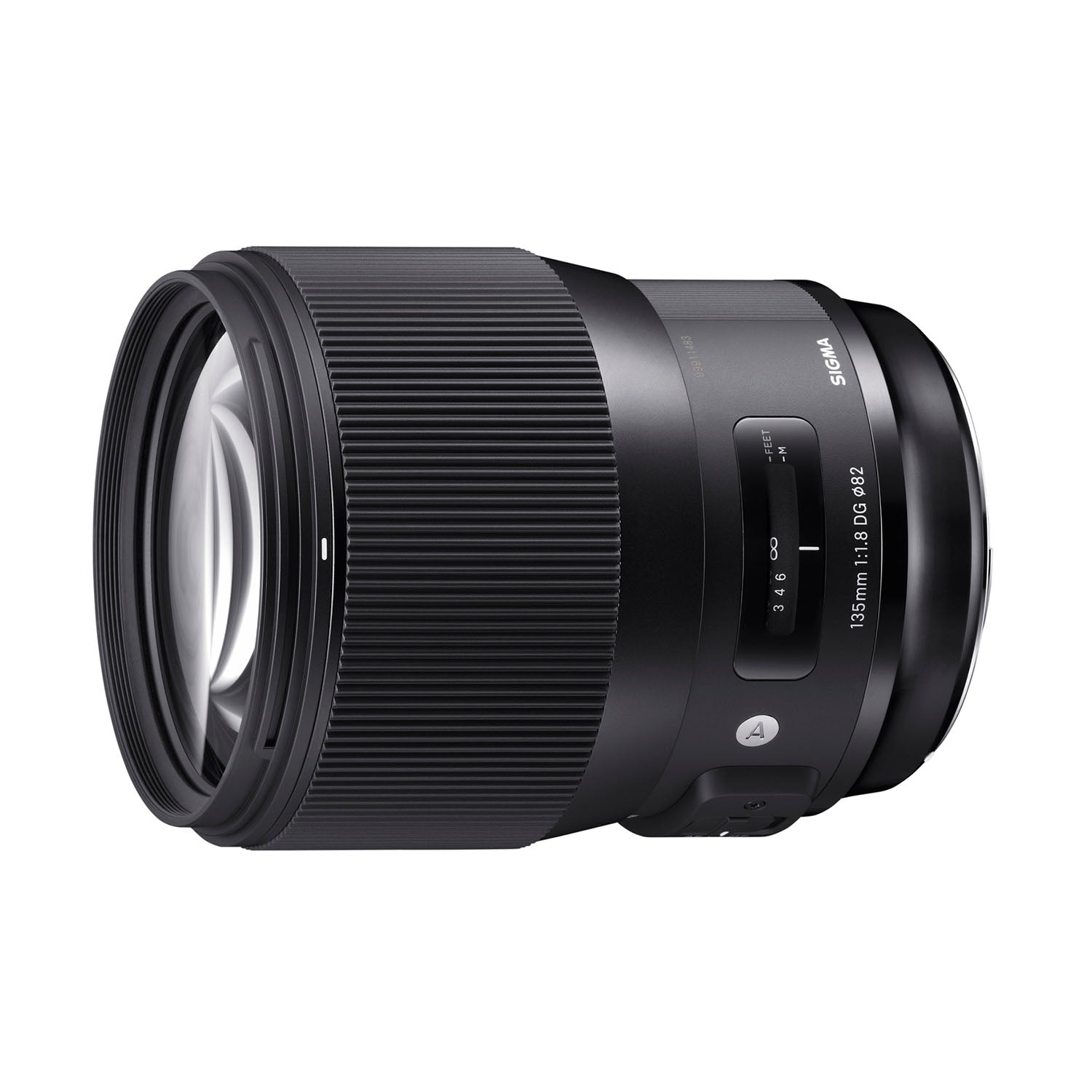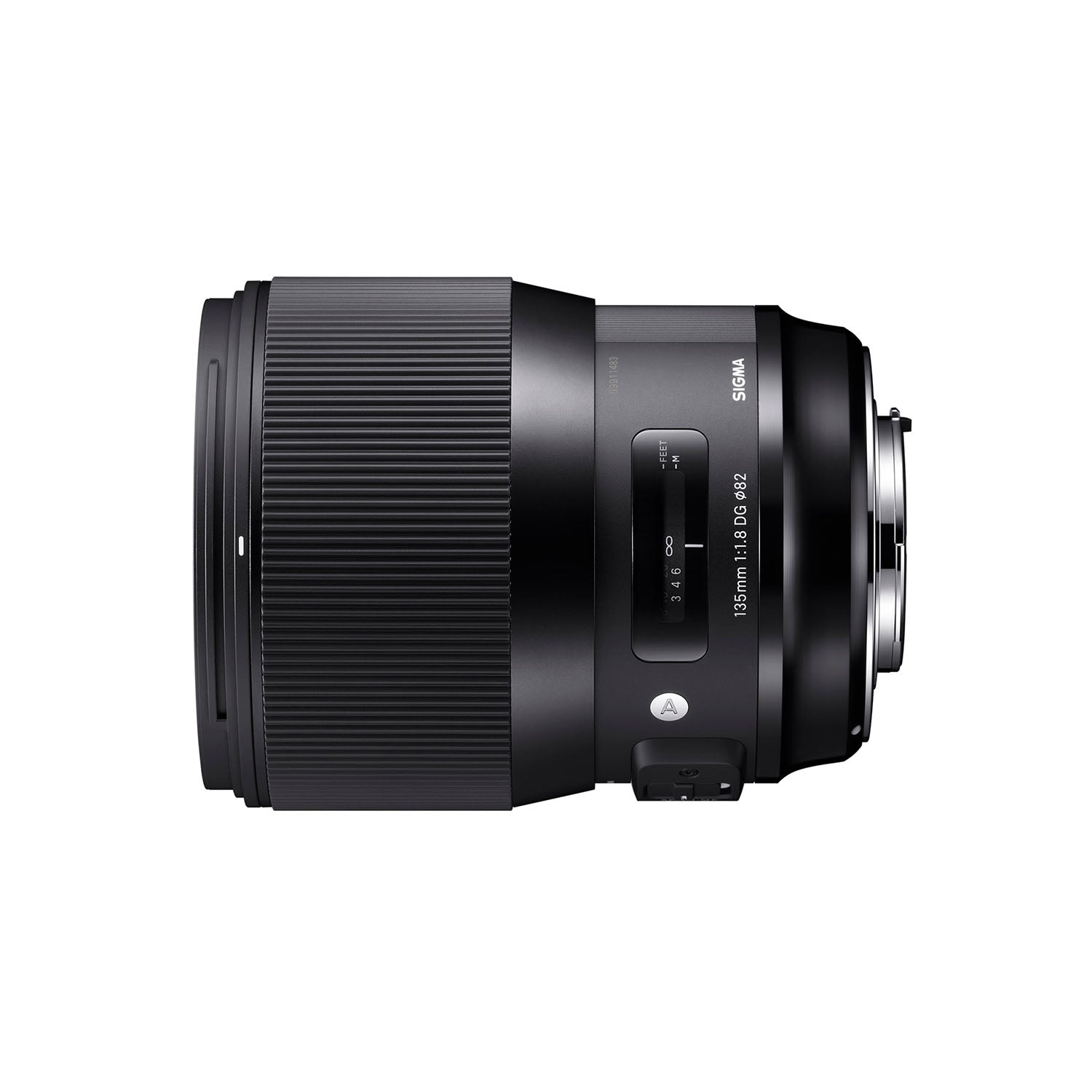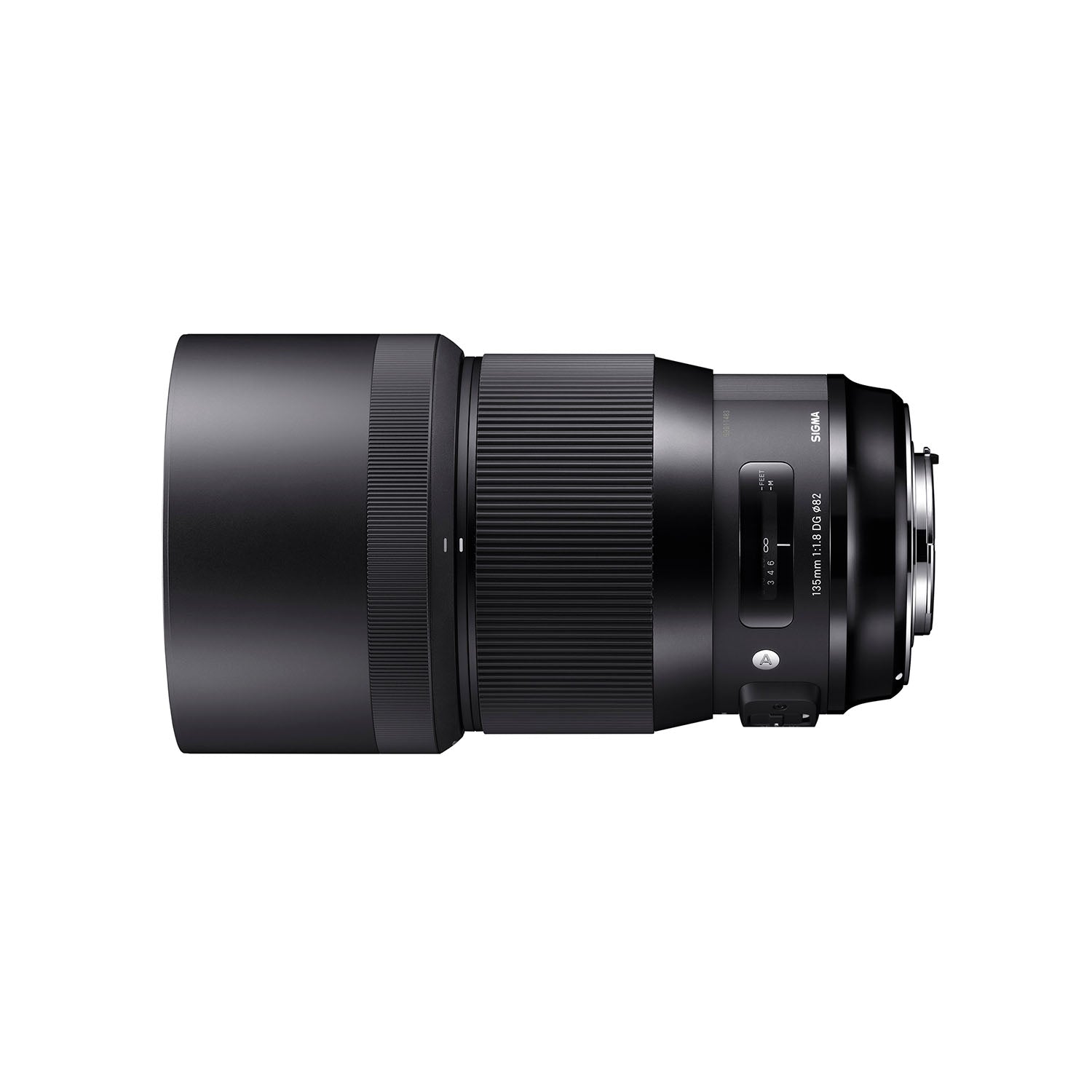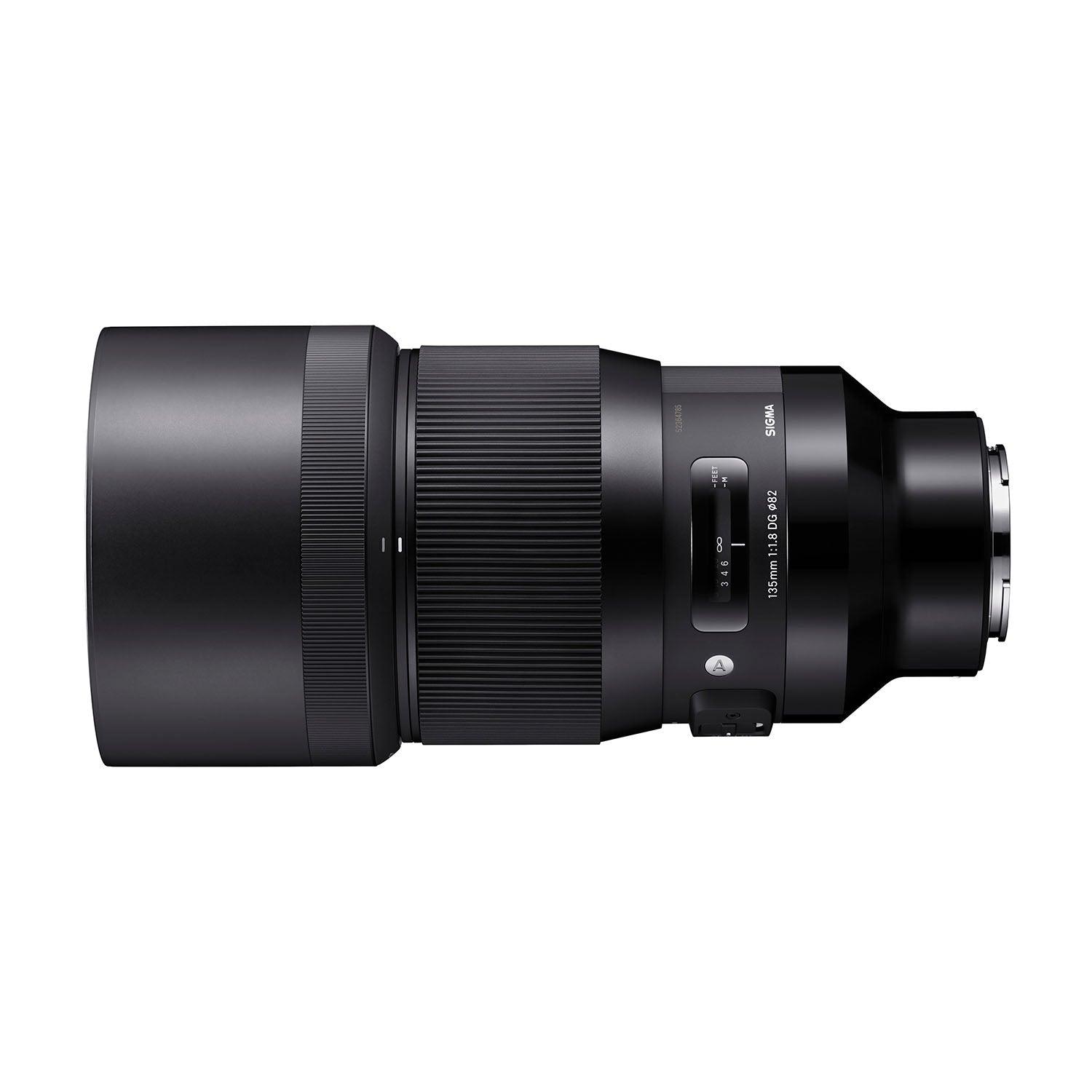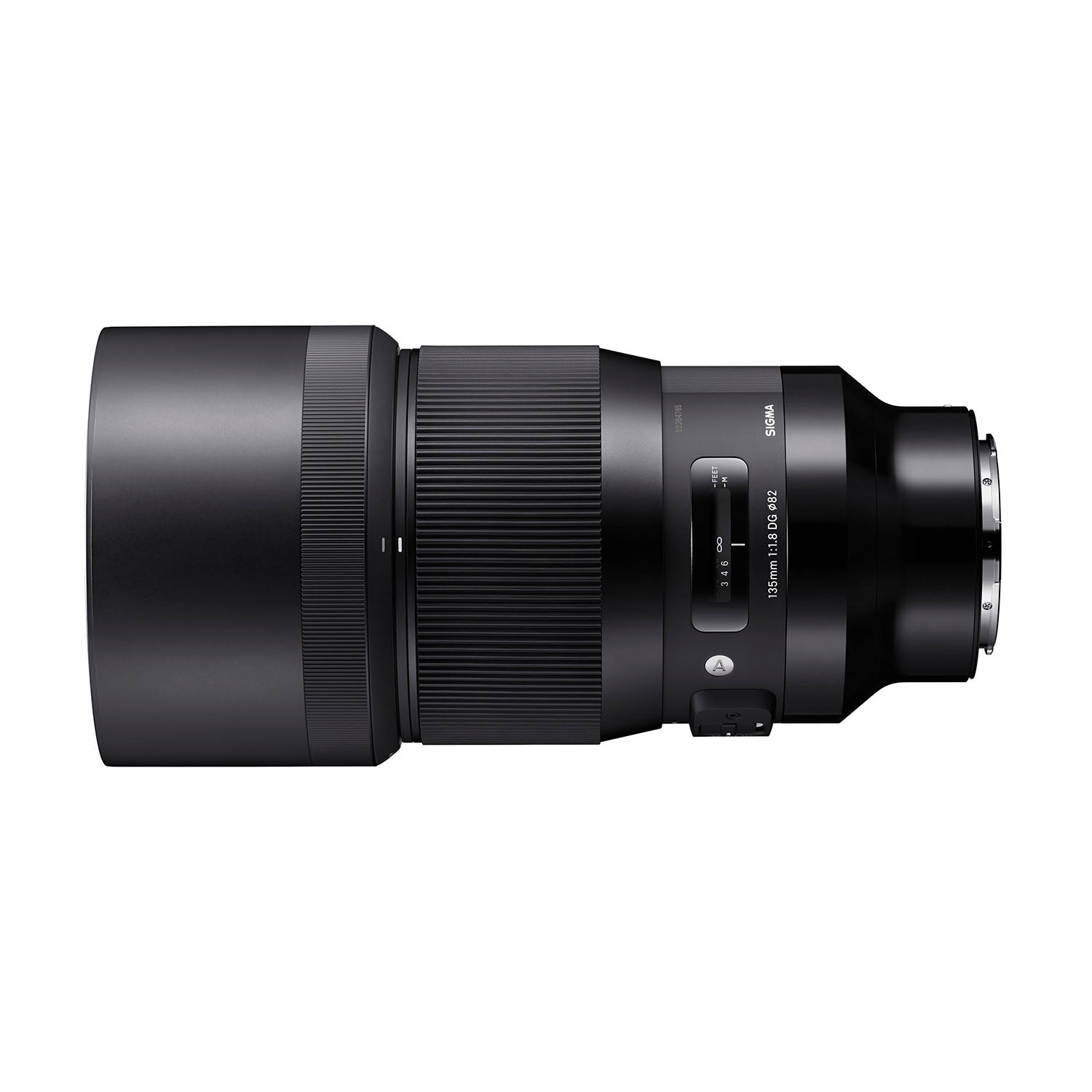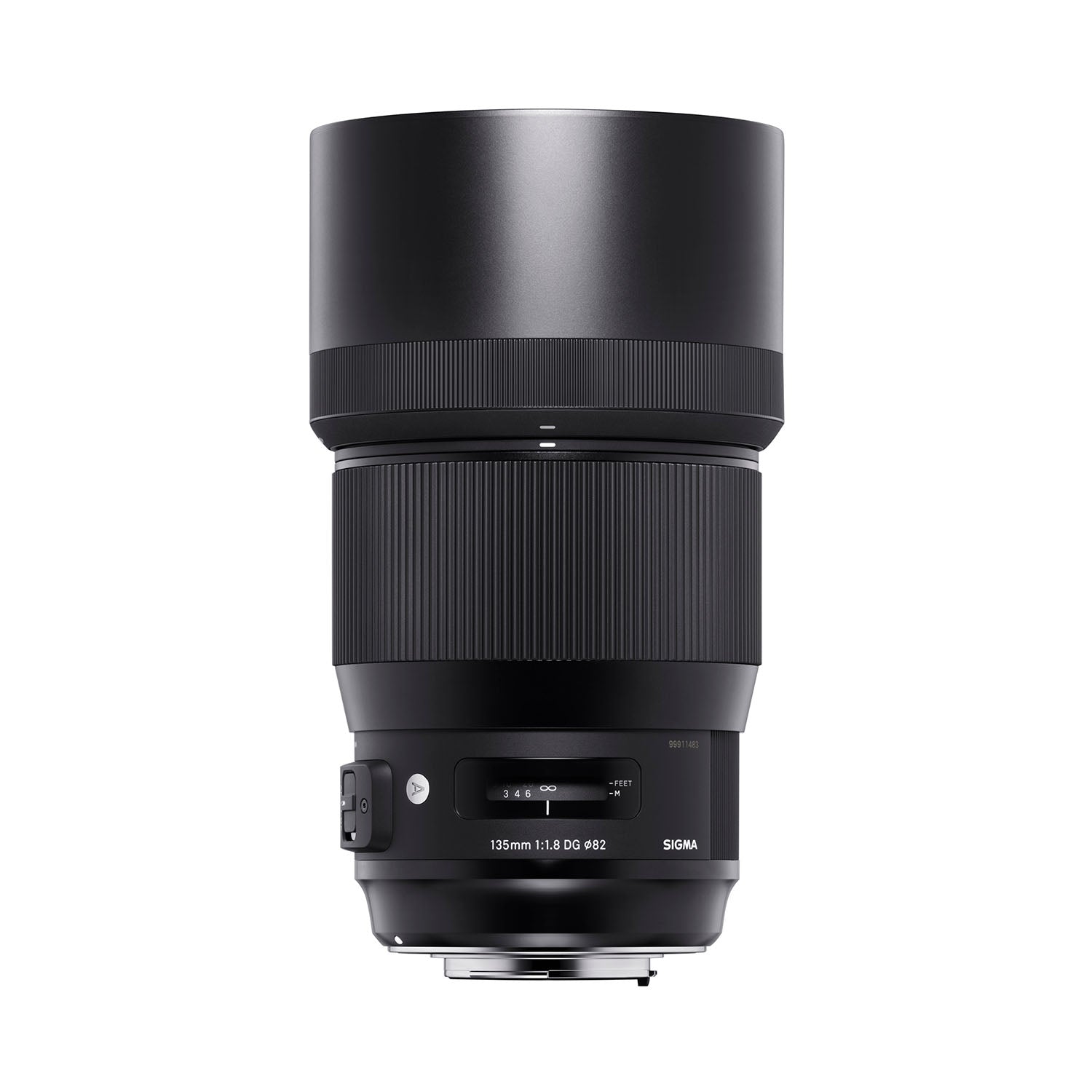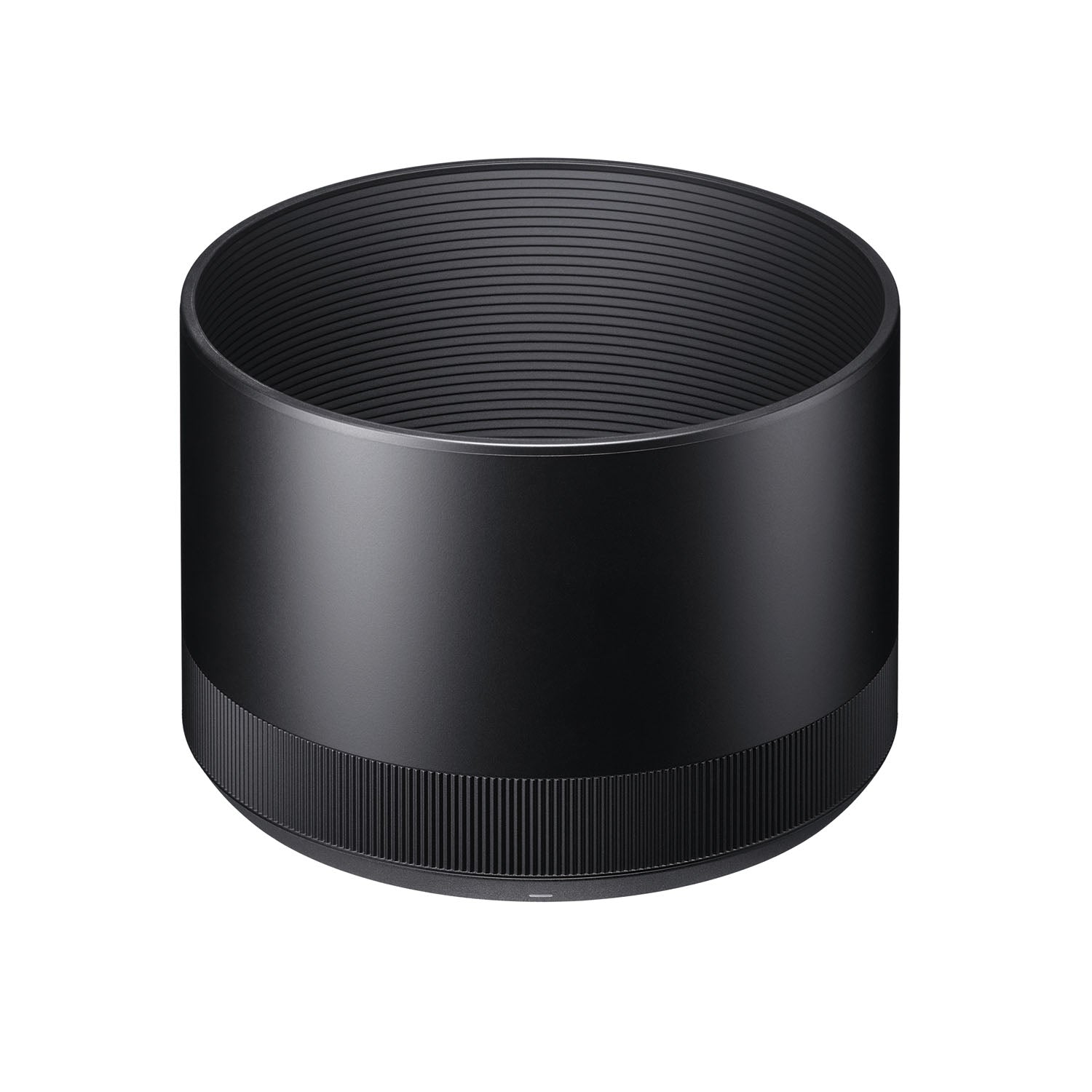What we think...
Product Description
Sigma 135mm F1.8 DG HSM Art Lens: Fast Telephoto Prime for Unrivalled Artistic Expression
Optical Excellence with Stunning Bokeh
The Sigma 135mm F1.8 DG HSM Art lens is a full-frame mid-telephoto prime, celebrated for its exceptional optical quality, fast aperture, and robust build. As the longest prime lens in Sigma’s Art line-up, it’s perfect for portraits, weddings, events, and telephoto landscapes. The lens produces spectacular bokeh, allowing photographers to separate subjects from backgrounds with striking perspective compression.

Advanced Optical Design for High-Resolution Images
Featuring two SLD (Special Low Dispersion) elements and two FLD (F Low Dispersion) elements, the Sigma 135mm F1.8 minimizes chromatic aberration, even in high-contrast scenes, ensuring ultra-high resolution and clarity throughout the image. Its fast F1.8 aperture excels in low-light conditions, making it ideal for capturing stunning portraits.

Robust and Precise Construction
The lens boasts superb build quality, with a barrel made from Thermally Stable Composite (TSC). This material is strong, lightweight, and has a thermal expansion rate similar to aluminium, ensuring consistent performance in varying temperatures. The internal focusing mechanism and rubberised focus ring enhance ease of use, maintaining a constant lens length.

Ready for Any Environment
The Sigma 135mm F1.8 features a dust- and splash-proof construction, making it reliable for outdoor use. The robust lens hood reduces flare and ghosting in bright sunlight while protecting the front element. A durable brass mount with a rubber seal helps keep out dust and moisture.

High-Performance Optics
The advanced optical design includes 13 elements in 10 groups, ensuring razor-sharp results with minimal chromatic aberration, flare, distortion, and vignetting. A Super Multi-Layer Coating reduces flare and ghosting, delivering high-contrast images with rich colours and strong blacks.

Shallow Depth-of-Field Effects
With its F1.8 aperture and 135mm focal length, the lens creates a narrow depth-of-field, producing beautiful background blur and enhancing the separation between subject and background. This effect is more pronounced than with shorter focal lengths, adding a dramatic touch to portraits and other subjects.

Key Specifications
- Lens Construction: 13 elements in 10 groups
- Angle of View: 18.2°
- Diaphragm Blades: 9 (rounded)
- Minimum Aperture: F16
- Minimum Focusing Distance: 87.5cm
- Maximum Magnification Ratio: 1:5
- Filter Thread: 82mm
- Dimensions (Diameter x Length): ø91.4mm × 114.9mm
- Weight: 1,130g
- AF Mounts Available: Canon EF, Nikon F, Sigma SA, L-Mount, Sony E

Mount Barcodes
- Canon EF: 00-85126-240547
- Nikon F: 00-85126-240554
- Sigma SA: 00-85126-240561
- L-Mount: 00-85126-240691
- Sony E: 00-85126-240653
Experience the ultimate in artistic expression with the Sigma 135mm F1.8 DG HSM Art lens. Its exceptional optical quality, robust construction, and beautiful bokeh make it a must-have for photographers seeking the highest level of performance.
-
Lens Construction 13 elements in 10 groups
Angle of View
18.2° Number of Diaphragm Blades 9 (Rounded diaphragm)
Minimum Aperture
F16 Minimum Focusing Distance
87.5cm / 34.4in.
Maximum Magnification Ratio
1:5 Filter Size φ82mm Dimensions (Diameter × Length) SIGMA SA-mount:φ91.4mm × 114.9mm / φ3.6in. × 4.5in.
Sony E-mount:φ91.4mm × 140.9mm / φ3.6in. × 5.5in.
L-Mount:φ91.4mm × 138.9mm / φ3.6in. × 5.4in.
*The length of a lens is measured from the filter surface to its mount.
Weight SIGMA SA-mount:1,130g / 39.9oz.
Sony E-mount:1,200g / 42.3oz.
L-Mount:1,220g / 43oz.
Supplied Accessories Case
LENS HOOD LH880-03
FRONT CAP LCF-82mm III
REAR CAP LCR II
Payment & Security
Your payment information is processed securely. We do not store credit card details nor have access to your credit card information.

